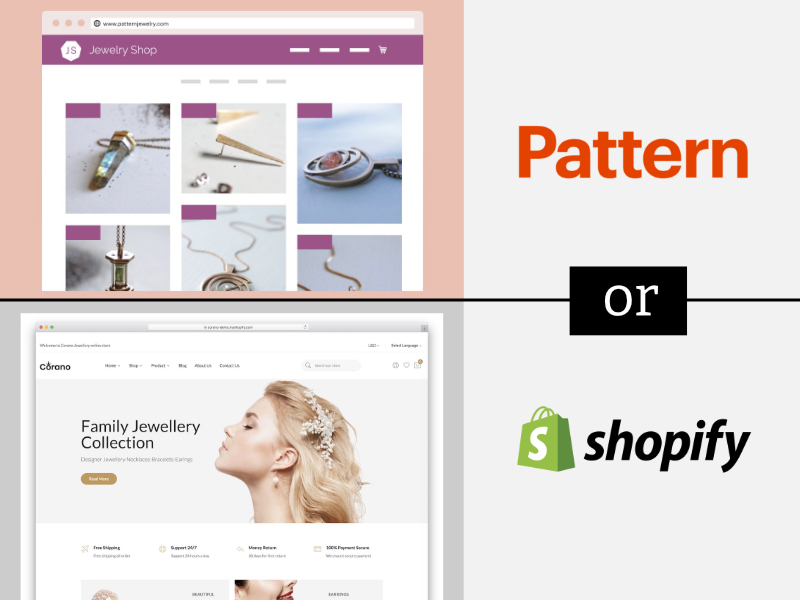
I am often baffled by how little merchants know about their customers. It sounds like an obvious thing to address, but it’s actually very complex to navigate. Identifying the customer requires curiosity and empathy. The customer we target will determine everything that happens downstream. Things like branding, copywriting, newsletter, product descriptions, menu navigation, value proposition, website design, and so much more depend on the customer.
The hardest part about identifying the customer is knowing who they are and whether or not they are profitable for your business. It’s tempting to want to cater to everyone, but that’s not a good use of your time. If you truly want to target everyone, then you need to be Amazon. Merchants will be more effective at generating sales by finding a niche. This means narrowing down to a small handful of customers.
The problem with customer personas
Customer personas are fictional profiles of potential customers. They are usually abstracted from real customers based on user research.
I’ve had my share of going through customer persona templates that ask you to create an imaginary profile with details such as: name, age, sex, occupation, income, interests, etc. The problem with these templates is that they are written by marketers, not by people who actually run e-commerce businesses. Marketers might know how to use them, but merchants will struggle. It might be one of those things where it’s just standard industry practice so it doesn’t get challenged. But when we look at how merchants try to craft the customer personas, they don’t find them useful. I particularly like this comment from a YouTuber who sells handmade jewelry:
If you’ve done any research online about your ideal customer, you’ve probably come across a lot of questionnaire, PDFs, question prompts that ask you to come up out of thin air the ideal customer’s name, her age, where she lives, whether she has kids or not, blah, blah, blah. And honestly, I don’t find a lot of practical need in knowing my ideal customer’s first name. Like, what do I do with that information? (Mei Pak from Creative Hive)
Mei Pak’s comment above signals that there needs to be a more focused and evidence-based approach to creating a customer persona.
I do think there is a place for the customer persona above, but not so early in the process. These are more useful once you have a general idea of what your customers look like and model the personas to a deliverable (such as a marketing campaign or an interface like a website). The next section explores practical tips to start identifying your customers.
How to actually build a useful + specific customer persona
This section is helpful for businesses who have already established a series of products they intend to sell, whether that’s handmade soap or pet accessories.
Sketching your customer market and segmenting them
To start, identify one non-negotiable requirement to be a qualifying customer. This will be the umbrella that defines your customers. Let’s use eco-friendly greeting cards as an example. The most basic non-negotiable requirement for a customer to buy greeting cards is that they value their personal relationships enough to buy a card.
Next, make some assumptions about who you want to target and segment them. What this means is that you are focusing on specific qualities that define a group of people you want to market to. When defining attributes of a customer segment, there are two general categories to consider: demographics and psychographics. The bare minimum info to include for demographics: age range, gender, and location. For psychographics, it’s: values and goals.
In our example of eco-friendly greeting cards, we can assume that these three segments could be our potential customers:

How I understand customer segmentation. We start with a broad non-negotiable requirement that captures all customers. Within this, we can segment them into broad categories that define a group of customers.
-
Sustainability advocates Demographics: age 20–30, all genders, North America. Psychographics: values purchases that considers environmental impact, wants to reduce their carbon footprint.
-
Generation X mothers Demographics: age 40–60, mothers, North America. Psychographics: values time with family and friends, wants to make others happy and smile.
-
Modern art lovers Demographics: age 20–45, all genders, North America. Psychographics: values quality and craft, wants to support other creatives.
A question I get asked is if a segment is specific enough. I think a good test to know is if you can identify an event or group where your segment gathers. Facebook groups, Reddit, YouTube, LinkedIn, conferences, etc. For the segment “sustainability advocates”, I found a subreddit called “r/sustainability” with 125,000 members. If we can find a community, then it is specific enough. 125,000 is still a lot of people to work with, so get more narrow if possible. How narrow? As narrow as possible.
Listening on social media for pain points
Once we have an idea of who our customer segments are, we need to identify their pain points and what topics of concerns they talk about. A way to do this is through social listening. It’s something I don’t see merchants doing enough. Merchants can learn a lot about their customers if they spend just one week reading through posts from the customer’s community.
I’ve developed a qualitative research technique that is based on thematic analysis, it is a way to quickly identify customer pain points. I prefer to gather my data from Reddit, but you could do this from any social media platform.
We will use a client I worked with who sells gaming chairs as an example. First, formulate a question you want answered. In our case, we wanted to know “what are the pain points customers experience when buying a gaming chair?”. Next, we try to find where customers gather. A quick search on Reddit yielded a subreddit called “gamingchairs”.
Take the 10 most recent posts and organize them as cards. I did this by using the “gallery” feature on Notion. I like that I can move the cards around as needed and I can see a preview of each card.
Each card has the initial text from the original poster and the replies. For each post, highlight parts of the text that relate to the research question.
Create a new board on Notion and begin to pull each phrase highlighted into one card. Then add tags for each card to categorize the phrase. This process is called coding the data.
Finally, create mega-categories of these phrases. This collection of information allows us to understand how to best design customer experiences that address customer pain points.
From my research, I discovered the biggest pain point was around trust. Customers didn’t know if they could trust a product they found from a website and need more information to validate product quality. Sometimes, websites don’t offer reviews, and if they did, customers didn’t trust them because it could be fabricated. Typically, customers will put more weight on a peer’s feedback than a company’s. The strategic action we learned from this was for my client to position himself as a peer, not a company.
Putting it all together on a value proposition canvas
The final piece is to put it all together into a customer profile. I use this value proposition canvas template from Strategyzer. It’s a very simple way to break down a customer profile and how your products fit their needs.
We start from the right, the customer job. This lists the goals and tasks the customer wants to complete in the context of their segment. Then we list out pains that get in the way of them completing their jobs (this information comes out of the previous exercise we did). Finally, we list gains, which are outcomes they would like to have. For each section, we rank them to prioritize what to address.
I like to use FigJam when I complete this exercise. The sticky notes make it so easy for me to move ideas around. Below is an example from a session I did with my client selling gaming chairs. What’s super interesting about this exercise is that at the beginning, he listed functional jobs that are in the second row. Then as I probed deeper, we identified social and emotional goals his customers hope to achieve. His customers are competitive gamers and their end goal for buying a chair is so they can focus on their gaming sessions. They play games because it gives them a sense of accomplishment. This exercise got my client thinking deeply about his customers.
The pains section is my favourite to do because I can really hear the gears ticking in my client’s head. It’s interesting that at the bottom of this list, we identified ergonomics as lower on the pain point spectrum. Budget was the bigger challenge because it meant customers were limited in the quality of desk setup they could build.
Quick recap
And that’s it! Not too hard right? To summarize, here are the key steps: Brainstorm customer segments to target. If you can find an online community for this segment, then it’s specific enough to start with. List demographic and psychographic information for each segment. Listen to what customers are saying in their communities. Identify pain points you can help resolve. Put all this information together via a customer profile.
Keep iterating on customer segments
Identifying customer segments is tough, but it’s one of the foundational first blocks in building an online store. It should be treated like a living entity. It needs to be regularly tested and updated. As you build your store and make sales, listen to your customers closely and keep monitoring what people talk about online. Keep your ears open and try to ask bigger questions about how your products fit with customer’s needs. At the end of the day, it’s not about what you sell, it’s about how you solve customer problems.
Comments












